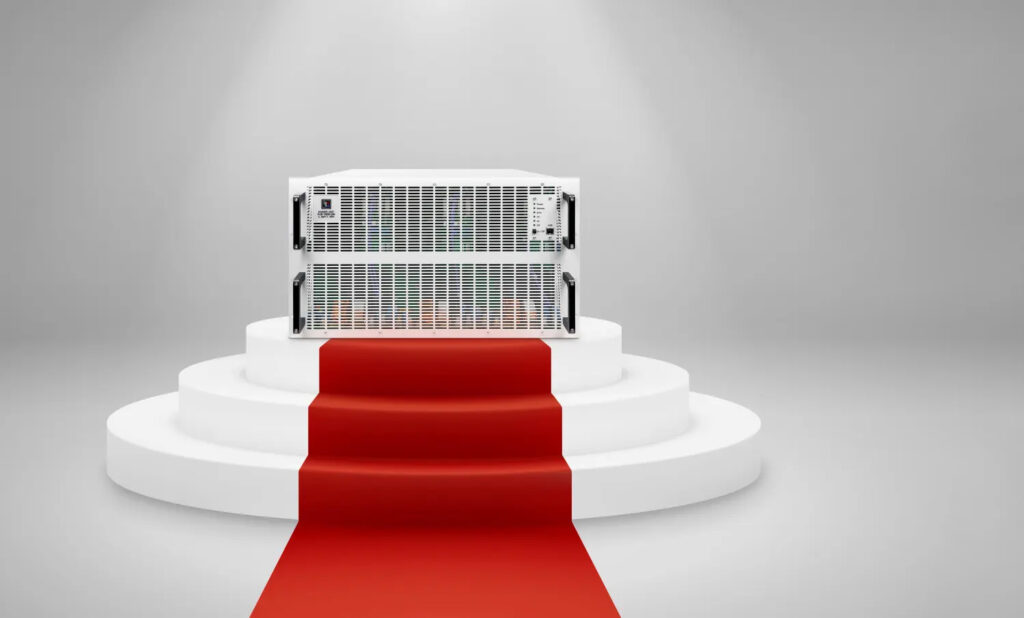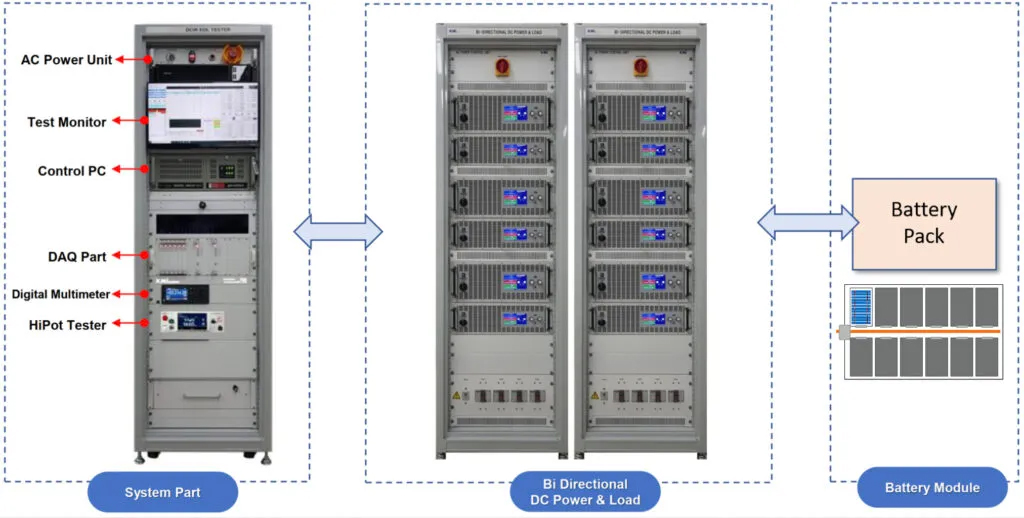This website uses cookies so that we can provide you with the best user experience possible. Cookie information is stored in your browser and performs functions such as recognising you when you return to our website and helping our team to understand which sections of the website you find most interesting and useful. See our privacy policy.
News
The Relevance of Programmable Power Supplies in Battery Testing

Programmable power supplies are power sources that can be remotely controlled and programmed through various digital interfaces or analog inputs to provide a specific output voltage, current and power level. Programmable power supplies are commonly used in electronics manufacturing, battery testing and research and development to provide precise and accurate power to their respective applications. They are also popular in automation applications, in which they can be programmed to cycle through different output levels depending on the application’s needs.
Programmable power supplies are essential in testing batteries because they provide a precise and accurate way of simulating the behavior of a battery under different charging and discharging conditions. Programmable power supplies allow testers to control the battery’s voltage, current and power output and simulate the different conditions the battery might encounter in the real world. This type of testing is particularly useful for evaluating battery performance, identifying potential faults and improving battery design.
This article focuses on the programmable power supplies and electronic loads offered by EA Elektro-Automatik and its applications in battery testing.
Overview of Battery Testing
Batteries must undergo extensive testing during development and manufacture to make sure they will meet requirements in the real world. Engineers have often charged batteries with programmable DC power supplies and discharged them with resistive or electronic loads. Both tests can now be carried out with a single device: the bidirectional, regenerative power supply. By recycling the energy from a discharged battery back into the local grid, a bidirectional, regenerative power supply reduces equipment expenses, scarce rack space and energy prices. A typical battery-testing solution is shown in Figure 1. On the right is the battery module, comprising the battery packs under test. These are normally placed inside a climate chamber and cooled through appropriate chilling. On the left is the system part. It is a rack containing the power supply, an industrial PC that controls all the operation interfacing with the other components through CAN bus, cell voltage and temperature DAQ, digital multimeter, hi-pot tester, test monitor and relay wiring circuit.
In the middle is the bidirectional DC power and load. The bidirectional power supply can switch between the controlled charging and discharging of the test batteries without any noticeable interruption
 Figure 1: Battery-testing solution (Source: EA Elektro-Automatik)
Figure 1: Battery-testing solution (Source: EA Elektro-Automatik)The EA 10000 Industrial Series
EA Elektro-Automatik has recently introduced its new Industrial Series 60-kW and 30-kW programmable bidirectional DC power supplies (EA-PUB 10000), programmable DC power supplies (EA-PU 10000) and programmable regenerative electronic loads (EA-PUL 10000).
Examples of typical uses include testing battery packs for electric vehicles, operating furnaces in factories that make semiconductor wafers, processing electrochemical electrolysis and testing solar inverters. The new items (Figure 2) are designed for production ATE and automated process control systems that demand high power but lack manual front-panel displays
 Figure 2: The new EA-10000 Industrial Series with
Figure 2: The new EA-10000 Industrial Series with60 kW in 6U and up to 300 kW in a single rack
(Source: EA Elektro-Automatik)
The maximum voltages and currents produced by the 60-kW models range from 360 V to 2,000 V and 480 A to 80 A, respectively, while those produced by the 30-kW versions range from 60 V to 2,000 V and 1,000 A to 40 A. Overall, there are 21 models in the 60-kW Series and 29 models in the 30-kW Series, allowing engineers to choose the type that best suits their needs. Engineers can save valuable rack space and deliver more power in a smaller footprint by reducing the number of power instruments required for a high-power system thanks to the increased power capability.
EA Elektro-Automatik offers the highest power density, with 60 kW in one 6U enclosure and 30 kW in a 4U enclosure.
“With the new 60-kW and 30-kW Industrial Series instruments, EA Elektro-Automatik provides space-saving, cost-effective solutions with priority on both safety and the lowest cost of ownership,” said Markus Schyboll, CEO of EA Elektro-Automatik. “All our models have overcurrent-, overvoltage-, overpower- and overtemperature-protection functions, and our new bidirectional power supplies and regenerative electronic loads have power factors of 0.99 and return up to 96% of absorbed power back to the grid.”
Benefits of the EA 10000 Industrial Series
The new EA 10000 Industrial Series offers several benefits, including:
- High system capacity, up to 3.84 MW. The master and auxiliary bus (formerly the master-slave bus) allows test engineers to parallel up to 64 of the 10000 Series power supplies and loads. This allows one instrument to manage all of the instruments in the system, which can be paralleled up to 3.84 MW. Any combination of instrument models from the EA 10000 Industrial Series family may be used in the system. Each instrument’s shared bus interface, which is galvanically isolated, ensures that all of the instruments securely share the load requirements and also prevents any instruments from overloading.
- Instrument cost and rack space savings. Engineers can reduce the number of power instruments required for a high-power system by using a single enclosure with a capacity of 60 kW, saving both significant capital expenditures and essential rack space. Additionally, removing a front–panel display reduces capital equipment expenses even more.
- Test–development time savings. The input and output properties of all instruments in the 10000 Series are the same, and they all run on the same firmware. When developing test and control systems needing multiple power instrumentation, the same code and user interface saves time during test development and setup.
- High voltage and current capacity with true autoranging. All instruments in the 10000 Series have an autoranging output (or input if an electronic load is present) characteristic. Compared with a power supply or load with a normal rectangular output/input characteristic, the instrument can have a higher–voltage capacity at lower currents and a higher–current capacity at lower voltages thanks to autoranging.
- Simulation of power devices and creation of AC + DC signals with built-in arbitrary waveform function generator. The on-board full–function generator is available with the EA-PU power supplies, EA-PUB bidirectional power supplies and EA-PUL electronic loads to create complex signals riding on a DC bias and simulate the properties of various devices, such as solar cells, batteries and fuel cells.
- Easy communication with PCs and programmable logic controllers (PLCs). The 10000 Series instruments perform well in both PLC-controlled industrial processes and PC-controlled test systems and feature LabView VIs and control software. Engineers can easily program the instruments using the SCPI or ModBus programming modes. There are several galvanically isolated interfaces on the 10000 Series devices.
- Regenerative technology. During the discharging cycles, power is not lost but converts this energy back into an AC current and feeds it back into the grid. This approach achieves a regenerative efficiency of nearly 96%, directly translating into savings and ROI advantages


